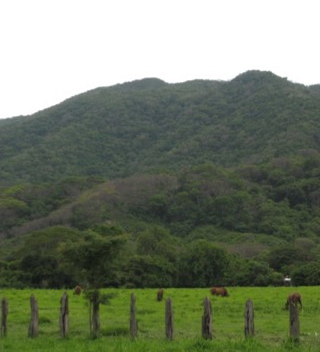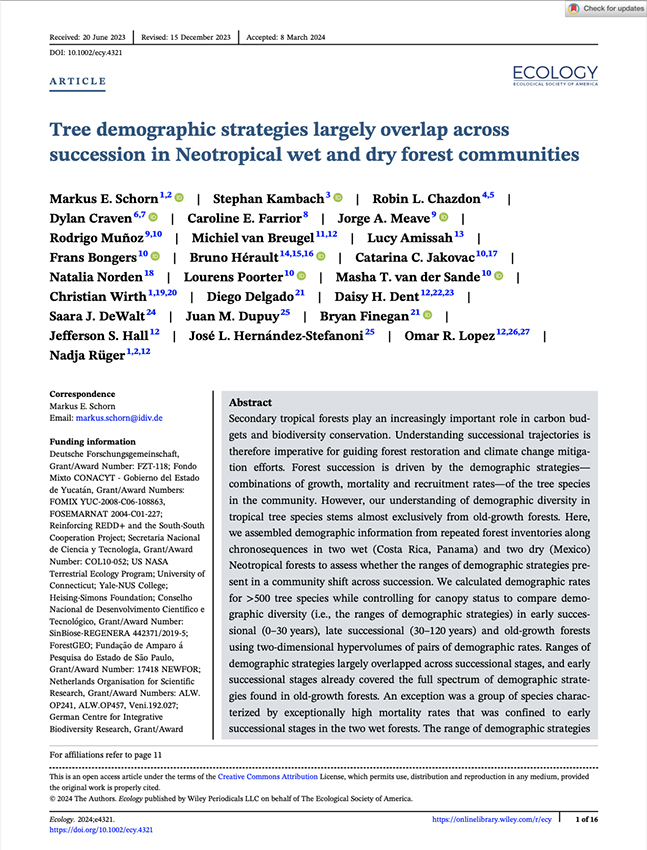New Research Highlights Demographic Strategies of Trees in Neotropical Secondary Forests

- Study published in the journal Ecology underscores the importance of demographic strategies for the restoration and conservation of tropical forests.
In a recent study, an international group of scientists has revealed significant findings on the demographic strategies of tree species in humid and dry secondary forests in the neotropical region. The research, published in the prestigious scientific journal Ecology, demonstrates that the demographic strategies of tree species, which are shaped by growth, mortality, and recruitment rates, are similar across all stages of forest succession, from young forests to mature forests.
The research was led by a team of experts from various institutions, including Bryan Finegan and Diego Delgado from the Forests and Biodiversity in Productive Landscapes Unit of CATIE (Tropical Agricultural Research and Higher Education Center). They analyzed a database containing more than 1.5 million measurements taken over time (since 1987 in the case of CATIE's contribution) in 350,000 trees of more than 500 species in forests in Costa Rica, Panama, and Mexico.
The results indicate that the demographic strategies of the tree species that make up the forests do not vary significantly throughout forest succession. This means that the species present in young forests already represent the demographic diversity found in mature forests.
One of the most notable findings is that, although the demographic strategies are generally consistent, a group of species with exceptionally high mortality rates was identified, found only in the early stages of succession in humid forests. This discovery highlights the need for specific studies in secondary forests to complement the information obtained in mature forests.
The importance of this study lies in its potential to guide efforts in the restoration and conservation of tropical forests. By better understanding the demographic strategies of tree species, scientists and forest managers can develop more effective management practices for forest restoration and climate change mitigation.
“This study not only expands our understanding of forest dynamics but also provides a solid foundation for future research and conservation efforts in the tropical forests of Latin America and the Caribbean,” concluded Finegan.
Find the article of this research, published in the journal Ecology, here.

More information:
Bryan Finegan
Senior Researcher
Forests and Biodiversity in Productive Landscapes Unit
Latin American Chair of Ecology in Natural Forest Management
CATIE
bfinegan@catie.ac.cr
Diego Delgado
Researcher
Forests and Biodiversity in Productive Landscapes Unit
Latin American Chair of Ecology in Natural Forest Management
CATIE
ddelgado@catie.ac.cr
Written by:
Karla Salazar Leiva
Communications Officer
Communications and Marketing Office
CATIE
karla.salazar@catie.ac.cr



